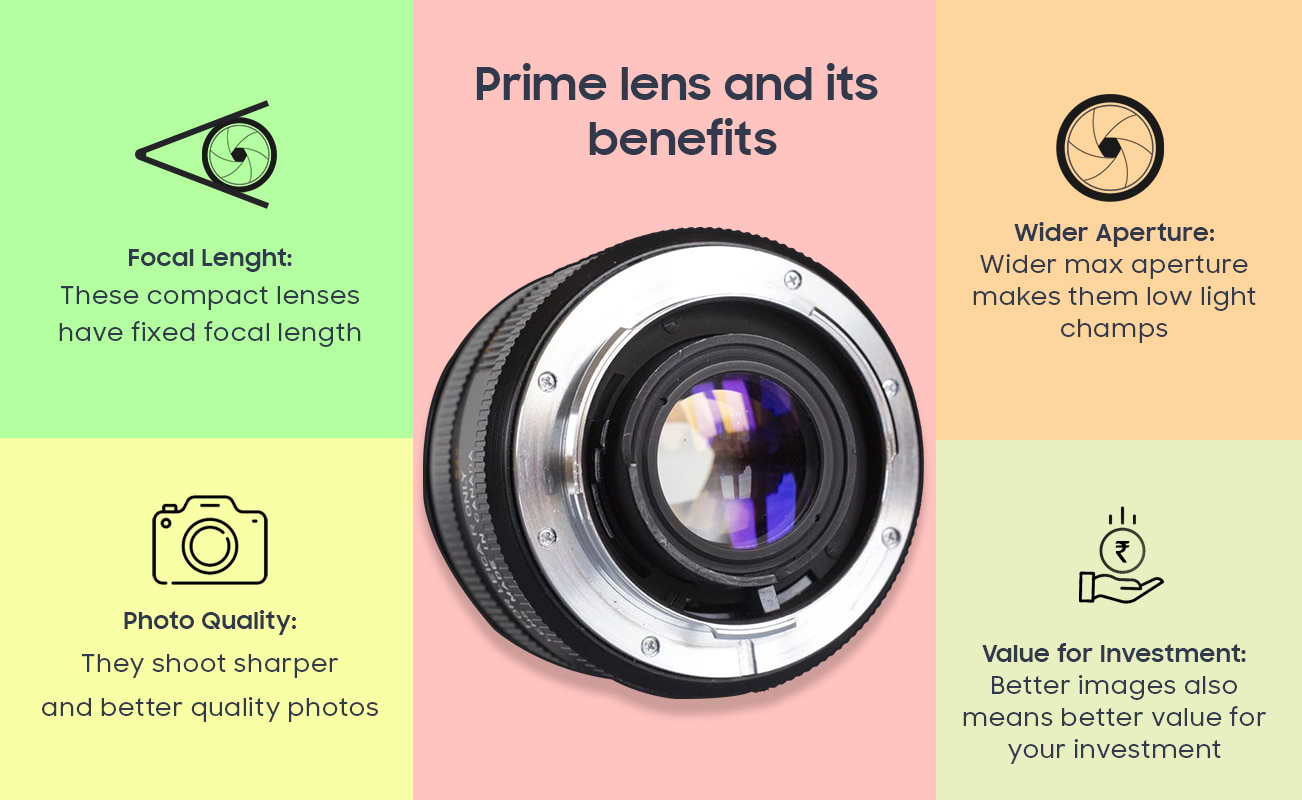Interchangeable lenses play a big role in adding a level of versatility to DSLRs and mirrorless cameras that are unmatchable by smartphones or point-and-shoot cameras. Whatever photos you shoot, there are all manner of lenses out there to choose from. But all these different lenses fall into two distinct categories — zoom and prime lens.
Of the two, professional photographers tend to go for a prime lens since they offer sharper photographs and faster shutter speeds. But what is a prime lens, and why should I be buying one? We answer that and more in this article.
What is a Prime Lens?
A lens is only considered a ‘prime’ if it fulfils the prime lens definition of being a lens with “a fixed-focal-length or univocal lens.” In simpler words, a prime lens is focused on one focal length. In comparison, a zoom lens supports variable focal lengths, allowing the photographer to adjust the focal lengths within a specified range.
ALSO READ: What is a DSLR camera and is it for you?
While that makes zoom lenses more versatile, in reality, these lenses are a bit of a jack of all trades, master of none. Since prime lenses stick to one focal length, they are the masters of that particular trade.
What are some types of Prime Lenses?
Up to 35mm are considered to be wide-angle prime lenses that can capture a wider field of view when compared to a standard lens. Speaking of which, a 50mm is a standard prime lens that is a go-to for all beginners.
The 85mm lens is best suited for portrait shots with the ability to blur the background and make the subject stand out. Lastly, the 135mm and beyond telephoto lenses are useful for shooting a subject at a distance and are also suited for sports, wildlife, and action photography.
What are the benefits of a Prime Lens?
Sharper image quality: Among the top benefits of going for a prime lens is their ability to shoot better quality photos than other lenses. Since they only have to focus on one focal length, there is less distortion or aberration, which results in sharper images.
Low light champ: Prime lenses also have wider maximum apertures, which let in more light when the shutter is open. This makes it easier to get a good quality low-light photo without a lot of fiddling around with the ISO settings or shutter speeds.
Compact size: Owing to the lesser mechanism inside, prime lenses tend to be lighter than zoom lenses. When out shooting, you can carry two or three different prime lenses, and they will still take up less space than a professional zoom lens. In simpler words, prime lenses are easy to travel with.
ALSO READ: 6 mobile photography tips to level up your Instagram game
Value for money: Prime lenses are priced on par with zoom lenses, and sometimes tend to be cheaper as well. With their ability to shoot better-quality photos, you end up getting more value for your money.
When should you use a Prime Lens?
If you’re looking for a lens that offers fast focusing, and high image quality, in a compact form factor and at an accessible price, then prime lenses might be your best choice. These lenses are well suited for portrait or product photography, landscape photography or when shooting wildlife or sports.

Unleash your inner geek with Croma Unboxed
Subscribe now to stay ahead with the latest articles and updates
You are almost there
Enter your details to subscribe

Happiness unboxed!
Thank you for subscribing to our blog.
Disclaimer: This post as well as the layout and design on this website are protected under Indian intellectual property laws, including the Copyright Act, 1957 and the Trade Marks Act, 1999 and is the property of Infiniti Retail Limited (Croma). Using, copying (in full or in part), adapting or altering this post or any other material from Croma’s website is expressly prohibited without prior written permission from Croma. For permission to use the content on the Croma’s website, please connect on contactunboxed@croma.com
- Related articles
- Popular articles












Sambit Satpathy
Comments